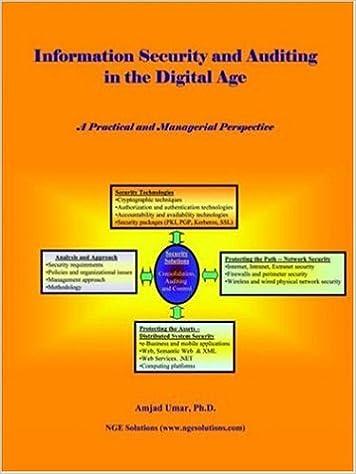Question
Simpson Manufacturing has the following standard cost sheet for one of its products: Total Direct materials 5 pounds at $2 per pound $ 10 Direct
Simpson Manufacturing has the following standard cost sheet for one of its products:
| Total | ||||
| Direct materials | 5 pounds at $2 per pound | $ | 10 | |
| Direct labor | 2 hours at $25 per hour | 50 | ||
| Variable factory overhead | 2 hours at $5 per hour | 10 | ||
| Fixed factory overhead | 2 hours at $20 per hour | 40 | ||
| Cost per unit | $ | 110 | ||
The company uses a standard cost system and applies factory overhead cost based on direct labor hours and determines the factory overhead rate based on a practical capacity of 400 units of the product.
Simpson has the following actual operating results for the year just completed:
| Units manufactured | 386 | |||||
| Direct materials purchased and used | 1,930 | pounds | $ | 21,230 | ||
| Direct labor incurred | 880 | hours | 23,760 | |||
| Variable factory overhead incurred | 5,632 | |||||
| Fixed factory overhead incurred | 15,800 | |||||
Before closing the periodic accounts, the (standard cost) entries in selected accounts follow:
| Account | Debit (total) | Credit (total) | |||||
| Work-in-process inventory | $ | 192,000 | $ | 147,640 | |||
| Finished goods inventory | 147,640 | 124,690 | |||||
| Cost of goods sold | 124,690 | ||||||
Required:
1. Determine for the period the following items:
a. Flexible budget for variable factory overhead cost based on output for the period.
b. Total variable overhead cost applied to production during the period.
c. Total budgeted fixed factory overhead cost.
d. Total fixed factory overhead cost applied to production during the period.
2. Compute the following factory overhead cost variances using a four-variance analysis:
a. Total variable overhead cost variance.
b. Variable overhead spending variance.
c. Variable overhead efficiency variance.
d. Total underapplied or overapplied variable overhead.
e. Fixed overhead spending variance.
f. Fixed overhead production volume variance.
g. Total fixed overhead cost variance.
h. Total underapplied or overapplied fixed overhead.
3. Compute the following factory overhead cost variances using three-variance analysis:
a. Overhead spending variance.
b. Overhead efficiency variance.
c. Fixed overhead production volume variance.
4. Compute the total overhead flexible-budget variance and the fixed overhead production volume variance using a two-variance analysis.
5. Using a single overhead account (e.g., Factory Overhead), make proper journal entries for:
a. Incurrence of factory overhead costs.
b. Application of factory overhead costs to production.
c. Identification of overhead variances assuming that the firm uses the four-variance analysis identified in requirement 2.
d. Close all factory overhead cost items and their variances of the period if:
(1) The firm closes all variances to the Cost of Goods Sold account.
(2) The firm prorates variances to the inventory accounts and the Cost of Goods Sold account.
Step by Step Solution
There are 3 Steps involved in it
Step: 1

Get Instant Access to Expert-Tailored Solutions
See step-by-step solutions with expert insights and AI powered tools for academic success
Step: 2

Step: 3

Ace Your Homework with AI
Get the answers you need in no time with our AI-driven, step-by-step assistance
Get Started


